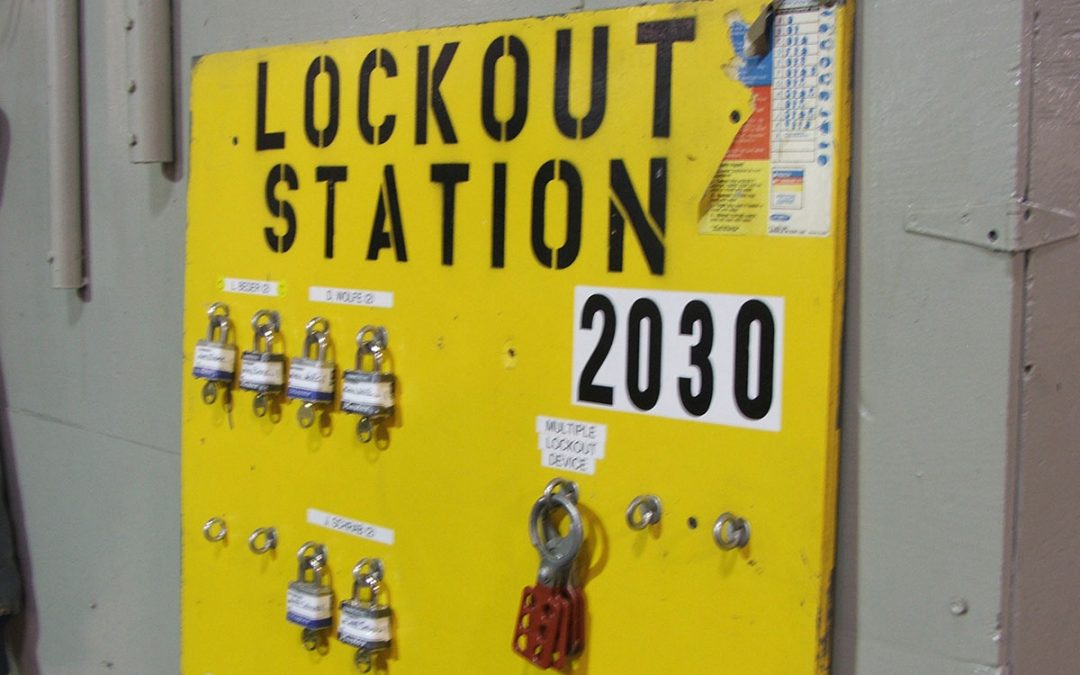Lockout/Tagout, aka LOTO, is one of those safety terms that gets thrown around a lot. So if you’ve been wondering “what is lockout tagout?” here’s what you need to know:
The OSHA standard for The Control of Hazardous Energy is also known as Lockout/Tagout. A LOTO program addresses the steps necessary to disable machinery or equipment that could release hazardous energy or start unexpectedly during servicing or maintenance activities. The OSHA standard covers a number of specific hazardous energies, including electrical, hydraulic, pneumatic, mechanical, chemical, and thermal. As an employer, you need to have a LOTO program in place and provide training to your employees.
Why Does Lockout/Tagout Exist?
LOTO exists to protect employees who may be exposed to serious physical harm or death if hazardous energy is not controlled while servicing or performing maintenance activities. OSHA estimates that compliance with the LOTO standard can prevent 120 fatalities and 50,000 injuries every year. If you have equipment in your workplace, you need to develop a LOTO safety program to keep your employees safe and to remain in compliance.
What Must Employers Do to Comply with OSHA’s Hazardous Energy Control Standard?
The ultimate goal of LOTO is to keep your employees safe. As you might imagine, all OSHA standards are designed to minimize the risk to your employees in your workplace. In order to be successful you must have a Hazardous Energy Control Program, which includes LOTO training.
Protecting Employees with a Lockout/Tagout Program
Here are just a few of the requirements that should be included in your LOTO program:
- Develop, document, implement, and enforce energy control procedures.
- Use lockout devices for equipment that can be locked out. Tagout devices may be used in lieu of lockout devices only if the tagout program provides employee protection equivalent to that provided through a lockout program.
- Use only LOTO devices authorized for the particular equipment or machinery and ensure that they are durable, standardized, and substantial.
- Inspect and adjust LOTO procedures at least annually.
- Provide effective training as mandated for all employees covered by the standard.
For a full list of requirements to develop your LOTO program, view the OSHA Lockout/Tagout Factsheet.
Lockout/Tagout Safety Training Requirements
OSHA requires that LOTO safety training cover at least the following three areas:
- How each employee’s specific position relates to the LOTO training
- The LOTO procedure relevant to each employee’s duties and position
- The various requirements of OSHA’s LOTO standard, which are identified within your LOTO program
In order to have a successful Hazardous Energy Control Program, it must include the process of identifying the types of energies that pose a threat to your employees, implementing and training on LOTO procedures to ensure that energies are controlled during maintenance or service, and retraining employees in order to maintain proficiency.
Training is a key element in creating a successful Hazardous Energy Control Program. This training should include machine specific LOTO procedures to ensure that energies are controlled during maintenance or service, and retraining to maintain proficiency.
LOTO training is one of many courses that eSafety can offer to help meet your general awareness training needs. For a closer look at eSafety Training, request a free quote.


